
surfresearch.com.au
bob evans : burleigh heads 1948 and the stomp, 1963.
bob evans : burleigh heads 1948 and the stomp, 1963.
|
|
|
|
|
|
 |
surfresearch.com.au
bob evans : burleigh heads 1948 and the stomp, 1963. |
On page 37, an article titled Manly Pioneers Surfing followed a request in the June issue for information on the history of body surfing in Australia by Doug Grainger of Terrigal.
Claiming that surfing started in Victoria, Doug's letter nearly caused a riot prompting a well documented reply from Vivienne Mclnnes of Newtown, Sydney, essentially based on C.B. Maxwell's Surf, published in 1949.
Also in this edition:
|
Burleigh Heads
S.W. Editor
Bob Evans recalls the days when 500 N.S.W.
surfers invaded the border beaches
and voted Burleigh Heads Number One. Photos by "Wheels" Williams Story by Bob Evans What a fabulous time we had on that first trip to Queensland for the Australian Surf Championships in April '48. Those were the wonderful days when almost every able-bodied youngster was a proud member of a life saving club and it was a privilege indeed. Looking back on that surfing era it's hard to explain the anticipation of almost every club member to see if he was selected in the club team. The club spirit and the great feeling between members was an indefinable manly quality that perhaps has slipped a bit. But let's get back to that riotous trip. |
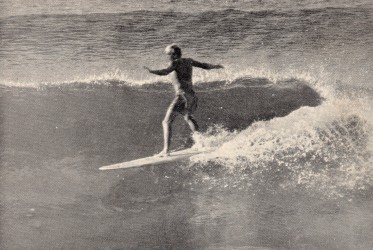 |
| Today they would
have been considered strictly gun board material. Subsequent to that memorable trip, we never caught Burleigh in such action until 1961 when at about 4 feet in May it was small, hollow and very fast with nearly every wipe-out meaning a smashed board. The shots you see here now are of fairly similar conditions, just a little larger but with the same drastic results for loose boards. A top
competitor in the '48 titles "Bluey" Mayes
swings through a traditional bottom turn on a glassy Burleigh Heads seven-footer. |
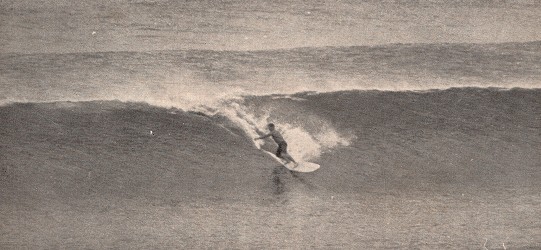 |
|
THE STOMP
Australian
surfers returning from Hawaii have introduced a
surfing dance craze
that has swept the country with its avante garde beat. The biggest
thing to hit the dance floors since the
introduction of the Twist is most certainly the
Stomp.
As a dance it is the acme of simplicity, necessitating very few basic step motions, but needing, man, lots and lots of animal energy. It's a hearty kind of dance, slightly humorous in its action, very, very rhythmic and a "gas" way of warming up on a winter night and what's more, they use girls as partners. What more could you want from a dance, but a solid beat, guitars, driving, gasping baritone, sax solos, drums and amplified bass plus the usual variety of supporting avant-garde type instruments to support the beat with unlimited new sounds. Believe me the guitar is the heart and soul of a stomp band. |
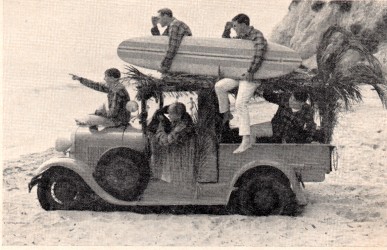 The Beach
Boys
pictured aboard a crazy surfing jalopy. |
| Page 32 The
World of Surf
|
|
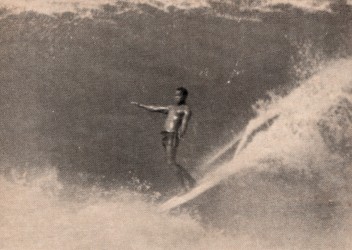 |
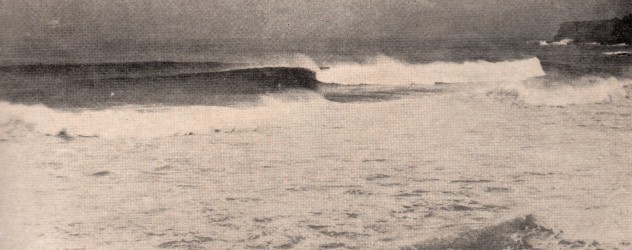 Bronte:
With its pounding waves presents a formidable
target for the brave.
|
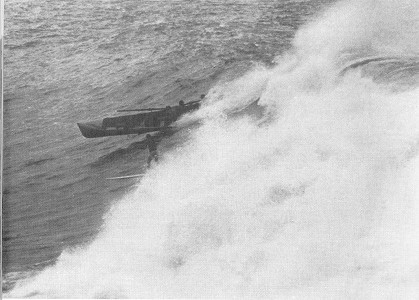 |
Palm Beach Surf Life Saving Boat Cabbage Tree 1, Fairy Bower, 27th March, 1966. Captain : John Windshuttle Brawley, page 148. The boat was destroyed two waves later, and an inquiry was held by the club into the actions of the crew. |
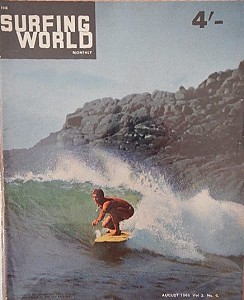 |
|
|
|
|
|
|